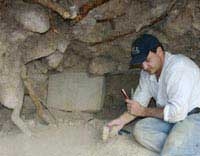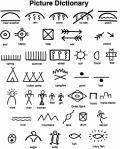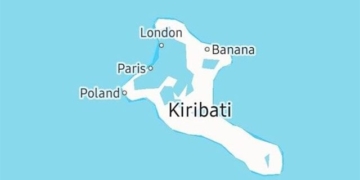Thousands of years before humans intentionally practiced mummification, nature did it for them through various environmental conditions.
When left in nature, human remains typically reduce to skeletons after a few years. Civilizations with mummification practices, such as ancient Egypt, could avoid this reality by employing complex burial processes involving special tools, chemicals, and techniques, according to National Geographic.
However, there are many ways to turn a body into a natural mummy without the use of canopic jars, natron salt, or brain extraction tools. In fact, some of the oldest Egyptian mummies were likely formed by accident, according to Frank Rühli, director of the Institute of Evolutionary Medicine at the University of Zurich and director of the Mummy Research and Paleopathology Organization. Buried under shallow gravel, bodies could be naturally preserved for thousands of years by the dry heat of the Sahara Desert environment. Rühli believes this may have inspired ancient Egyptians to begin mummifying those they revered.
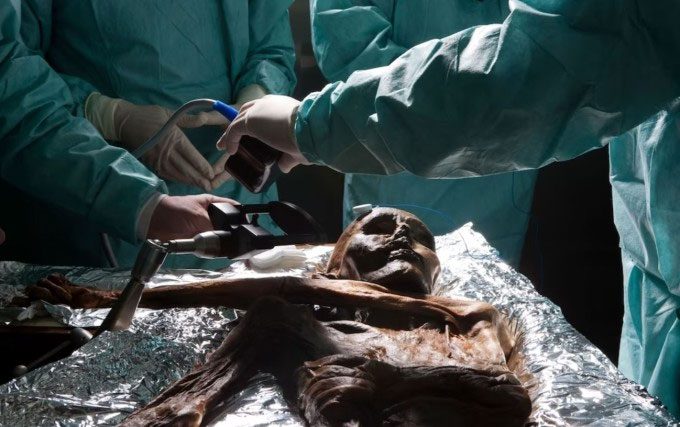
Researchers taking brain samples from the Ötzi mummy. (Photo: National Geographic).
The dry desert is just one of many environments that can transform a body into a natural mummy. Scientists explain how environments ranging from swamps to icy mountain peaks can inhibit decay and facilitate mummification.
Desert Mummies
Egypt is not the only desert civilization famous for its mummies. The Chinchorro people of northern Chile began mummifying around 2,000 years before the Egyptians. But thousands of years prior, the Atacama Desert had done this for them. “One of the interesting things about Chinchorro mummies is that some were intentionally prepared while others are natural mummies,” said anthropologist Bernardo Arriaza at the University of Tarapacá in Chile, who specializes in Chinchorro mummies.
Decomposition is a biological process, and without water, organisms cannot thrive. This is why deserts preserve mummies so effectively, as well as why the mummification processes of the Egyptians and Chinchorro included steps to dry out the bodies. The oldest Chinchorro mummy, Acha Man, has been naturally preserved by the desert for over 9,000 years. The Tarim mummy in Xinjiang, China, is among the most intact, buried in a coffin shaped like a boat for 4,000 years in the Taklamakan Desert.
Salt Mummies
For some unfortunate Iranian miners trapped in a cave in the Chehrabad salt mine, salt preserved their bodies just as effectively as the desert. “They were working in the salt mine, and then the mine collapsed,” Rühli explained. This happened multiple times (at least twice) over more than 1,000 years. The salt mine became a burial site for young men separated by centuries. While the weight of the salt pressed down on the miners, the salt crystals sucked moisture from their bodies and mummified them.
Salt in the dry soil of the Atacama Desert also helped preserve Chinchorro mummies, according to Arriaza. The soil contains compounds of nitrate, nitrogen, potassium, sodium, and calcium, which contribute to the dehydration of the body.
Icy Mummies
Dehydration is not the only way to prevent decay. Low temperatures slow down most biological processes, and completely freezing a body can also prevent decay for thousands of years. Pathologist Andreas Nerlich at Munich Klinik Bogenhausen studies the Ötzi mummy, a 5,300-year-old ice mummy uncovered on a melting glacier in the Ötztal Alps near the Austria-Italy border. According to him, mummies like Ötzi will be preserved as long as there is ice.
Although rare, ice mummies can be exceptionally well-preserved compared to dehydrated mummies. This is because the dehydration process tends to wrinkle and distort tissues, while frozen organs largely retain their shape. Permafrost, which is soil that remains frozen year-round, can also mummify bodies. The Ice Maiden, a 2,500-year-old mummy in Siberia, was frozen in a block of ice after her burial chamber flooded. Because the tomb was located in permafrost, the ice formed within never melted.
Wetland Mummies
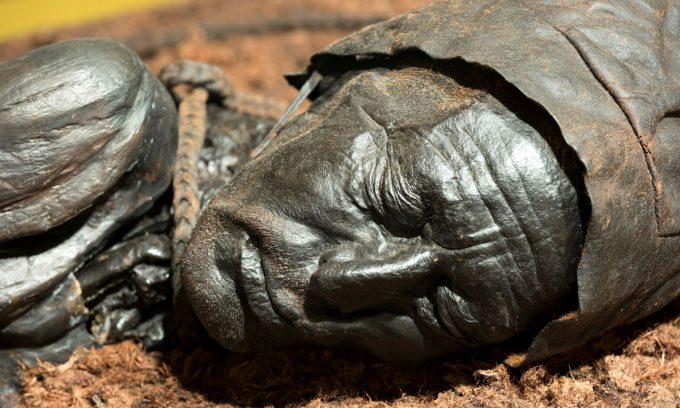
Tollund Man, a wetland mummy approximately 2,400 years old. (Photo: Tim Graham /Getty).
Another effective way for natural mummification to occur is by placing the body in a peat bog. Experts have found a large number of such wetland mummies in northern Europe, particularly in Denmark, Germany, the Netherlands, Sweden, Poland, Ireland, and England.
If immersed in a peat bog, the body is exposed to cold, highly acidic water and a lack of oxygen. Additionally, certain unique chemical reactions here will promote the mummification process.
A key factor is the type of vegetation characteristic of peat bogs. These areas often contain Sphagnum moss, which grows on the surface of the bog. The lower layers of the bog are filled with decaying Sphagnum. Upon dying, the moss releases a type of polysaccharide called sphagnan, which has properties that help remove metal ions from a solution. As a result, some metal ions such as iron, copper, or zinc become unavailable to bacteria, depriving them of crucial nutrients, according to the book Taphonomy of Human Remains: Forensic Analysis of the Dead and the Depositional Environment.
These harsh conditions prevent microorganisms from commencing the decomposition process, although bones will eventually erode in the acidic environment. As a result, the body turns brown, retaining skin, hair, and nails.
The most famous example of a wetland mummy is Tollund Man, discovered by peat diggers on the Jutland Peninsula in Denmark around the 1950s. Upon first seeing the mummy, people believed it was a recently missing boy from the area. However, analysis revealed that the ancient mummy was much older, dating back about 2,400 years. The mummy was preserved so well that scientists even learned what his last meal consisted of.
Freeze-Dried Mummies
Combining cold and dry conditions can mummify a body even if the environment is not consistently cold enough to keep the body frozen year-round. This process occurred with several women and children of Inuit descent in Greenland. They were naturally mummified in graves after death, likely from famine or disease during the 15th and 16th centuries.
“Although it is very cold in Greenland, the environment is not like the Arctic with permafrost,” said paleopathologist Niels Lynnerup at the University of Copenhagen. “The bodies were buried under rock crevices, so there was still wind blowing through, and the wind dried the bodies combined with the cold temperature that slowed bacterial activity, creating mummies.
The majority of Inca mummies found on the peaks of the Andes were also preserved in a similar manner. The Llullaillaco Maiden, the body of an Inca girl who died of exposure on the Andes after a sacrificial ritual, is a unique case of freezing.









































